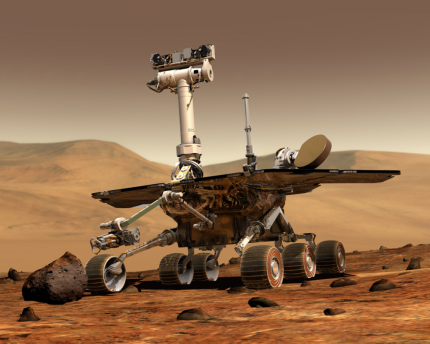
The storm blanketed 14 million square miles of Martian surface, roughly a quarter of the planet, according to NASA. Because Opportunity uses solar power, the dust storm has become a showstopper -- hopefully, a temporary one. Scientists are worried. But the robot is known for its work ethic. When launched in 2003, the rover was expected to explore the planet for 90 days. Up until the storm, it was still operational and sending scientists clues about the red planet:
1. Scientists announce Mars was once wet: In March 2004, scientists announced that clues from the composition of Martian rock, specifically, the physical appearance and presence of sulfates, make a case for the planet’s watery history. The rover's spectrometer detected a hydrated iron sulfate mineral called jarosite, according to NASA. The robot also turned up evidence of sulfates. Rocks containing this degree of salt on Earth have either formed in or been exposed to water.
2. Opportunity encounters a meteorite: In 2005, Opportunity found an iron meteorite, the first meteorite of any type identified on another planet.
3. Martian sand dunes photographed: In 2006, Opportunity photographed patterns in the layering of crater-wall cliffs that NASA described as “the clearest evidence of ancient sand dunes the rover has seen since arriving at Mars nearly three years ago.”
4. A timeline forms: Researchers used data from Opportunity to focus on a cluster of meteorites at an area just south of the planet's equator. They found a lack of rust on meteorites on the surface and concluded that the planet has been dry for millions of years.
5. Rover spots Earthlike formations: In February of this year, scientists announced that the rover had taken pictures of the ground showing stone stripes like those found on some mountain slopes on Earth. This was exciting news because on Earth those stripes are the result of repeated freeze-thaw cycles. The down side: On the red planet, it also could be the result of wind.
Related:
Mars In Brief: More evidence of habitable environment as rover chugs onwardIf you wish to comment, like us on Facebook and tell us what you think.